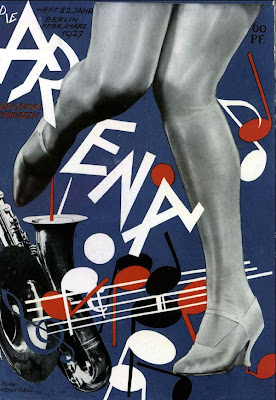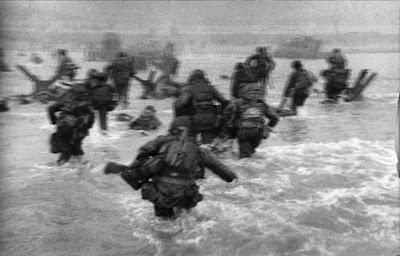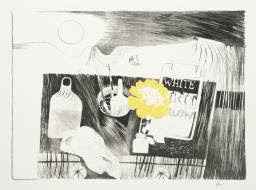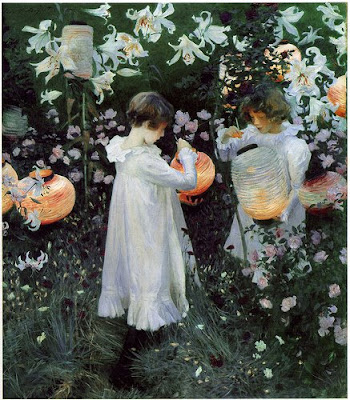Capture: Reflectws light from an object passes in to a camera and then onto a light sensitive surfaces.
Process: The captured image is turned into something we can see.
Store: The image is put onto something er cn keep, such as a printed photograph.
Analogue Photography
(1). Light enterts camera through lens.
(2). Light hits light sensitive film and reacts with it.
(3). Film removed from camera and put into chemicals for developing into negative.
(4). Negative projected onto photographic paper and printed, using more chemicals.
Digital Photography
(1). Light enters cameras through lens and hits light sensitive sensor.
(2). Signal from sensor converted into digital data by a processor.
(3). Digital data stored as an image on a storage medium in the camera.
RAW: A computer can correct RAW files more successfully than those that have been processed by the camera.However, RAW files are very large and no all software can edit them.
JPEG: The name JPEG stands for Joint Photographic Experts Group - the group who set this standard for digital photo cpmpression. When a captured image is turned into a JPEG,quality is sacrificed for a reduction in the size of the file - consequently this is known as "loosy" process.
File Type: Bitmapped Graphics Format
File Extension: .bmp
Use: Used internally by the Microsoft Windows Graphics SubSystem
File Type: PICT
File Extension: .pct
USe: Introduced on the original Apple MaCintouch computer as its standard digital image fo;e format.
Monday, 8 February 2010
Thursday, 15 January 2009
PHOTO ESSAY
For my photo essay i am going to focus on students life in the college.I am going to take random pictures in the college while students are studying in the Library,what they do in their spare time and college canteen.I choose this topic because i think its easy for me to take the pictures in the college and work on them also i like the college life.My audience is all the students who are studying in the college.I am going to take five different pictures which will show the life of students in the college.
Thursday, 27 November 2008
NAZI PHOTO MONTAGE
THREE IMAGES FROM JOHN HEARTFIELD WORK


Die Arena
February/March 1927
February/March 1927
This image of a dancing woman's legs was simply a good graphic for the magazine's cover. This is an excellent example of the advertising capabilities of photomontage.
Denonation:Women leg.dark background,symbols of music,large font.
Photomontage:Its good image,joining women leg with the signs of music represents dance in a party.Its showing good combination of music and and dance because you can't dance without music.
The monkey is reading Der Sturmer, an anti-semite newspaper. There is a satirical conversation between the animals.
MONKEY: I read in the paper that some people think Jews are animals, and so forth. Does this mean they will soon be put into the zoo with us?
MONKEY: I read in the paper that some people think Jews are animals, and so forth. Does this mean they will soon be put into the zoo with us?
MARABOU: Phoo! The Jews will be put on church steeples-that’s much more clever!
MONKEY: But tell me why. MARABOU: Because the Jews are the best lightning rods.
Denotation: Monkey,bird,black,brown and white colour.
Connonation: Animals also talk with each other, sound funny.
Photomontage: Its just like people from different races talk & work with each other,animals also do the same.
This piece shows humanity, broken on the wheel. It mirrors the traditional piece with a reference to the swastika, the Third Reich breaking human life.
Denotation: Jesus,dark colours,strong image.
Connotation: Unjustice,unkind,broken heart,life in danger.
Photomontage: Two joined images showing that the world getting cruel day by day.There is no respect left for humanity.
Q:What is Photomontage?
A:Photomontage is the process and result of making a composite photograph by cutting and joining a number of other photographs. The composite picture was sometimes photographed so that the final image is converted back into a seamless photographic print. A similar method, although one that does not use film, is realized today through image-editing software.
A:Photomontage is the process and result of making a composite photograph by cutting and joining a number of other photographs. The composite picture was sometimes photographed so that the final image is converted back into a seamless photographic print. A similar method, although one that does not use film, is realized today through image-editing software.
John Heartflied:John Heartfield (19 June 1891–26 April 1968) is the anglicized name of the German photomontage artist Helmut Herzfeld. He chose to call himself Heartfield in 1916, to criticize the rabid nationalism and anti-British sentiment prevalent in Germany during World War I.
John heartflied work:His photomontages satirising Adolf Hitler and the Nazis often subverted Nazi symbols such as the swastika in order to undermine their propaganda message.
One of his more famous pieces, made in 1935 entitled Hurrah, die Butter ist Alle! (English: Hurray, we have run out of butter!) was published on the frontpage of the AIZ in 1935. A parody of the aesthetics of propaganda, the photomontage shows a family at a kitchen table, where a nearby portrait of Hitler hangs and the wallpaper is emblazoned with swastikas. The family — mother, father, old woman, young man, baby, and dog — are attempting to eat pieces of metal, such as chains, bicycle handlebars, and rifles. Below, the title is written in large letters, in addition to a quote by Hermann Goering during food shortage. Translated, the quote reads: "Iron has always made a nation strong, butter and lard have only made the people fat".:
One of his more famous pieces, made in 1935 entitled Hurrah, die Butter ist Alle! (English: Hurray, we have run out of butter!) was published on the frontpage of the AIZ in 1935. A parody of the aesthetics of propaganda, the photomontage shows a family at a kitchen table, where a nearby portrait of Hitler hangs and the wallpaper is emblazoned with swastikas. The family — mother, father, old woman, young man, baby, and dog — are attempting to eat pieces of metal, such as chains, bicycle handlebars, and rifles. Below, the title is written in large letters, in addition to a quote by Hermann Goering during food shortage. Translated, the quote reads: "Iron has always made a nation strong, butter and lard have only made the people fat".:
Thursday, 20 November 2008
PHOTOSHOP LESSON 1

Q1:Say what we did in today's lesson?
Ans:We used diffenret kinds of tools and thier functions in photoshop toolbox program.
Q2:List all the tools you used and how they wrok?
Ans:Tools I used in toolbox program.
1.Move: select the image and move it in different poistions.
2.Text: use the text tool to make the font size smaller to larger and also change the colour of
font size.
3.Magic wand: to select the image.
4.Brush: to change image in different sizes.
5.Clone & pattern stamp: to paint the image.
Q3:Put your picure onto your post,underneath your picture tell me each item change you changed to create it?
Ans:I copied the image and paste in different position,i used the move tool to move the postion of trees,i used the clone tool to paintng the image.
Tuesday, 4 November 2008
ROBERT CAPA


Photographic Techinques:His own techineques
Photographer Focus:War
Name of photographer:Robert Capa
Birth place:Budapest, Austria-Hungary
Photographer Focus:War
Name of photographer:Robert Capa
Birth place:Budapest, Austria-Hungary
Year Born:22 october 1913
Died: 25 may 1954 place he died Thai Binh,State of Vietnam
Style of photography:Social Documentary
Name of influential works: (1)Robert Capa set the prevaiting standard for war photographers.
(2) He documented the coure of World War II in London,North Africa,Italy,the battle of Normandy on Omana Beach and the liberation of Paris.
(3) In Spain,Robert photograhed the horrors of the Spanish World War II.
(4) Robert armed with two Contax II cameras mounted with 50mm lenses and several rolls of spare film.
Died: 25 may 1954 place he died Thai Binh,State of Vietnam
Style of photography:Social Documentary
Name of influential works: (1)Robert Capa set the prevaiting standard for war photographers.
(2) He documented the coure of World War II in London,North Africa,Italy,the battle of Normandy on Omana Beach and the liberation of Paris.
(3) In Spain,Robert photograhed the horrors of the Spanish World War II.
(4) Robert armed with two Contax II cameras mounted with 50mm lenses and several rolls of spare film.
Q:Explain in a few words of the type and subject of photograpghy that this person produces?
A:I think most of his pictures taken in deadly areas,he fouces on the life of sodiler work in the army, and the life them is very challenging.
Q:How does this person`s work make you make feel?
A:He was very brave man,his work encourages me alot.He made a great example towards life of photograghers.
Q:Does this person`s work influence your own photograghy?How?
A:No,it doesn`t beacause i think he was professional photograghy but i am still learning .I cant make any comparsion between my work and his work.
A:I think most of his pictures taken in deadly areas,he fouces on the life of sodiler work in the army, and the life them is very challenging.
Q:How does this person`s work make you make feel?
A:He was very brave man,his work encourages me alot.He made a great example towards life of photograghers.
Q:Does this person`s work influence your own photograghy?How?
A:No,it doesn`t beacause i think he was professional photograghy but i am still learning .I cant make any comparsion between my work and his work.
Tuesday, 21 October 2008
Semiotics And Represenation
Q1:What is semiotics?
Ans:Semiotics is the study of sign processes (semiosis), or signification and communication, signs and symbols, both individually and grouped into sign systems. It includes the study of how meaning is constructed and understood.
Semiotics divides into two parts:(1)Signifier and (2)Signified
(1)Signifier: It is a form that a person can see, touch, smell, and/or hear.
(2)Signified: It represent an idea or mental construct of a thing rather than the thing itself.
Example:Red light in traffic lights is signifier.
Green light in traffic lights is signified.
Denotation:To list the things what you see in any image or else.In semiotics, denotation is the surface or literal meaning encoded to a signifier.
Conatation:In semiotics, connotation arises when the denotative relationship between a signifier and its signified is inadequate to serve the needs of the community. A second level of meanings is termed connotative. These meanings are not objective representations of the thing, but new usages produced by the language group.
Ans:Semiotics is the study of sign processes (semiosis), or signification and communication, signs and symbols, both individually and grouped into sign systems. It includes the study of how meaning is constructed and understood.
Semiotics divides into two parts:(1)Signifier and (2)Signified
(1)Signifier: It is a form that a person can see, touch, smell, and/or hear.
(2)Signified: It represent an idea or mental construct of a thing rather than the thing itself.
Example:Red light in traffic lights is signifier.
Green light in traffic lights is signified.
Denotation:To list the things what you see in any image or else.In semiotics, denotation is the surface or literal meaning encoded to a signifier.
Conatation:In semiotics, connotation arises when the denotative relationship between a signifier and its signified is inadequate to serve the needs of the community. A second level of meanings is termed connotative. These meanings are not objective representations of the thing, but new usages produced by the language group.
The Image I Dont Like In Tate Modern

The artist of this painting is Mary Feddon born in 1915 and the name of her painting is Etching Tablr 1972.
I just dont like this painting because it doesn't look like a really painting,it just like a rough sketch.Its not even a proper art work.Not really attractive.Looks very old.No lively painting.No colouring.A very rough idea.White and black colour appeals very old fashion.Just a wasteage of time.
Sunday, 19 October 2008
The Image I Like In Tate Modern

The artist of this painting is John Singer Sargent Carnation and the name of his painting is Lily,Lily,Rose (1885-6).
Painting and gardening both involve working with colour.Garden have seen as living pictures.Painting might seen more permanent than gardens,but the analogy between petals and pigments focuses our attention on the fragile nature of the expressive materials of both paintings and gardens.This is a stunning painting,lots of things going on.The glow on the bottom hand of the girl at the left is really amazing!!!
Thursday, 16 October 2008
Camera obscura And coverging len`s
Q1:What did you see while you were inside the camera abscura?
Ans:It was too dark in the room,light coming through the hole reflecting the object passing through the the hole.
Q2:How did is this camera obscura similar to inside of a camera?How is it different?
Ans:Because it projects upsidedown.They are very different because cant change the apperture.
Q3:Why was the image upsidedown?
Ans:Because there was so much light trying to get in the pinwhole that the light slowed down and turned the image upsidedown.
Ans:It was too dark in the room,light coming through the hole reflecting the object passing through the the hole.
Q2:How did is this camera obscura similar to inside of a camera?How is it different?
Ans:Because it projects upsidedown.They are very different because cant change the apperture.
Q3:Why was the image upsidedown?
Ans:Because there was so much light trying to get in the pinwhole that the light slowed down and turned the image upsidedown.
Thursday, 2 October 2008
SLR Camera Notes
(1)First way to control the light into the camera:The slower the shutter speed the more light that hits the film.
(2)Second way to control the light into the camera:is through aperture.The small aperture,the less light into the camera.
Slow 1sec
1/30sec
1/1ooosec
Lower Number= Small Aperture
Higher Number= Large Aperture
Observations On Images:
Shutter: Aperture: Oberseved
(1) 1sec : f4 : low aperture
(2) 1/30sec: f8 : light
(3) 1/250sec: f16 : dark
(4) 1/60sec : f11 : dim
(5) 1/500sec: f22 : too dark
Depth of field often called (DOF)
Background
DOF
Forground
The small aperture, less light= Great DOF
The Large aperture, more light= Small DOF
(2)Second way to control the light into the camera:is through aperture.The small aperture,the less light into the camera.
Slow 1sec
1/30sec
1/1ooosec
Fast
Lower Number= Small Aperture
Higher Number= Large Aperture
Observations On Images:
Shutter: Aperture: Oberseved
(1) 1sec : f4 : low aperture
(2) 1/30sec: f8 : light
(3) 1/250sec: f16 : dark
(4) 1/60sec : f11 : dim
(5) 1/500sec: f22 : too dark
Depth of field often called (DOF)
Background
DOF
Forground
The small aperture, less light= Great DOF
The Large aperture, more light= Small DOF
Subscribe to:
Comments (Atom)

